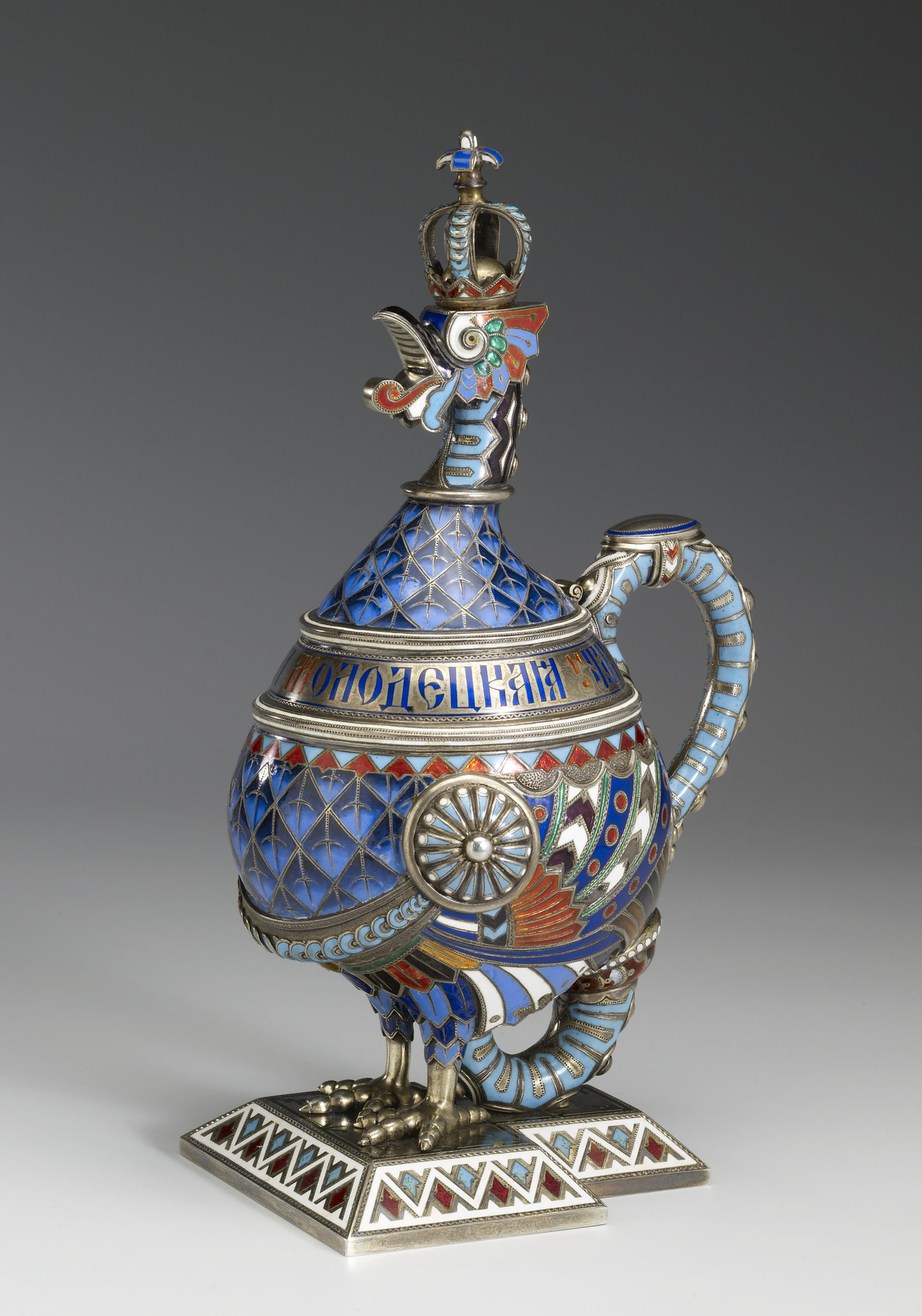Wine Carafe in the Shape of a Cockerel
(18th and 19th Centuries )
This highly fanciful carafe is shaped as a crowing cockerel: its beak serving as a spout, its crown as a stopper, and its tail as a handle. Around the shoulders, in blue Slavonic script on gilt is written the proverb, Drinking is not a hindrance but youth's diversion. The bird's feathers are mostly treated as diamond shapes in dark and mid-blue enamel. Some, however, are highlighted in black and white and in foil-backed translucent green and red enamel. Its feet are rendered naturalistically in silver gilt. A belt is suspended across the cockerel's belly from two circular buckles. Khlebnikov exhibited an identical carafe at the Philadelphia Centennial Exhibition in 1876.
The source for the cockerel form was most likely a parcel gilt kubak, or covered cup, made for Ivan the Terrible, Grand Prince of Moscow from 1547 to 1584. Fedor Solntsev illustrated his drawing of the cup in Drevnosti Rossikago gosudarstva (Antiquities of the Russian State) published between 1849 and 1853 (vol. 5, pl. 18).
Another more elaborate cockerel-shaped carafe by Khlebnikov, accompanied by some chicken-shaped drinking vessels, known as charkas, can be found in the State History Museum, Moscow (Inv. no. 99834; OK16234-16240).
Inscription
Provenance
Provenance (from the French provenir, 'to come from/forth') is the chronology of the ownership, custody, or location of a historical object. Learn more about provenance at the Walters.
Jean M. Riddell, Washington, D.C.; by bequest to Walters Art Museum, 2010.
Exhibitions
| 2017-2018 | Fabergé and the Russian Crafts Tradition: An Empire's Legacy . The Walters Art Museum, Baltimore. |
Geographies
Russia, Moscow (Place of Origin)
Measurements
Overall H carafe with stopper: 8 1/2 in. (21.6 cm); Carafe H: 7 1/8 × W: 4 13/16 × D: 3 9/16 in. (18.1 × 12.2 × 9 cm); Stopper H: 2 1/16 × W: 7/8 in. (5.2 × 2.3 cm)
Credit Line
Bequest of Mrs. Jean M. Riddell, 2010
Location in Museum
Not on view
Accession Number
In libraries, galleries, museums, and archives, an accession number is a unique identifier assigned to each object in the collection.
In libraries, galleries, museums, and archives, an accession number is a unique identifier assigned to each object in the collection.
44.790


